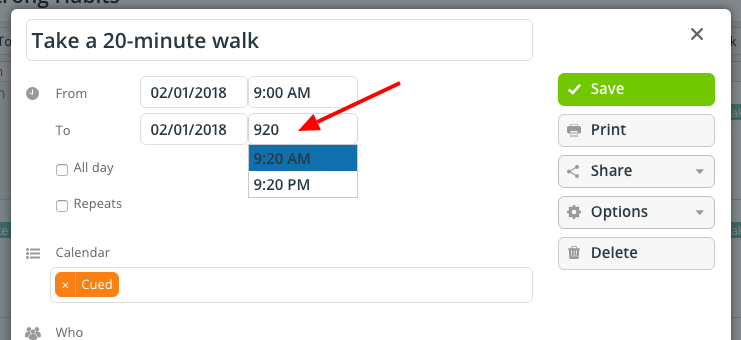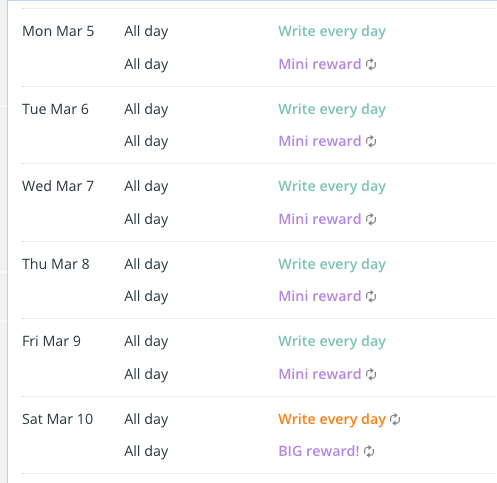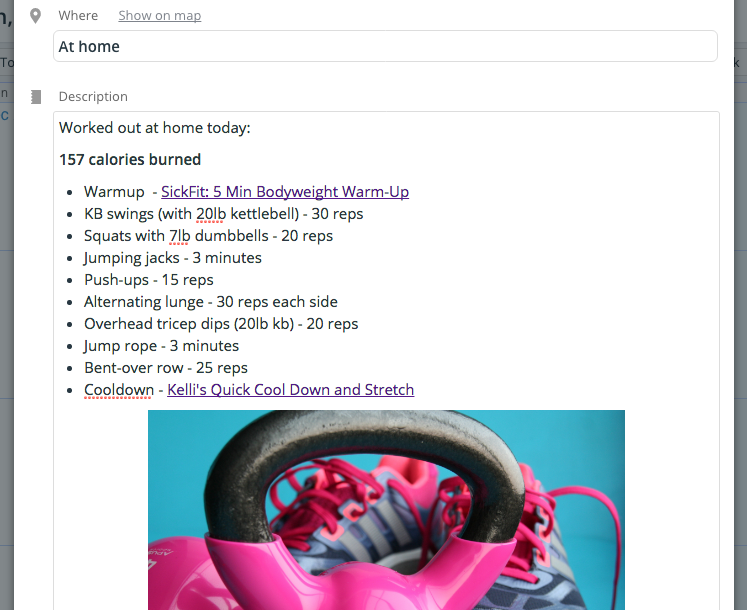Last updated Sep 20, 2022
Be accountable, set triggers, schedule rewards and celebrate milestones for stronger habits.
Habits are essential for making progress in the areas which matter most to you.
But a weak, inconsistent habit won’t help you much. It takes a lot of energy and willpower to stick to your habit when it’s not well-established.
A strong habit — one which you do consistently, without even thinking about it — is a powerful force that moves you toward your goals. Strong habits become automatic actions that build the life you want.
Once you’ve made a habit automatic, you reap the same benefits with a fraction of the energy you used to require.
The Strong Habit Framework
The framework for building a strong habit consists of three basic elements:
- the cue,
- the reward, and
- the routine.
There are also some methods you can use to make the habit-building process easier and more successful. We’ll get to those a little later.
First, let’s look at the basic framework.
For an in-depth look at how to build habits, we recommend Charles Duhigg’s insightful book, The Power of Habit.
3 Steps to Build Your Habit Framework
Think of your framework as the ladder you climb to reach your goal (a consistent, strong habit). The stronger and sturdier your ladder, the easier it is to climb.
Take these three steps to create a solid framework.
Step 1: Choose your cues.
Start by choosing the habit you want to create (or strengthen). A well-defined, specific action is best. For example, rather than exercise every day, decide to take a 20-minute walk every day.
Tip: a daily habit is the strongest kind of habit, because it becomes truly automatic. You don’t have to think, “Is today the day for my habit?” You just do it, every single day.
Next, think about the trigger, or cue, for your habit.
There are many types of cues:
- time of day: I’ll take my walk at 6:00 in the evening.
- activity: I’ll take my walk on my lunch break.
- location: I’ll walk at the park.
- other action: I’ll go for a walk when I take the dog out in the morning.
- supplies: I’ll set my walking clothes and shoes by the bed.
Tip: use more than one cue! Multiple cues make it easier for you to remember and complete your habit.
How to Do It
A cue doesn’t work unless you are aware of it. Adding your habit cues to your calendar will keep them in your awareness.
Create two sub-calendars, one for Cued and one for Completed. Then, when you complete your habit, drag it from the Cued calendar and drop to the Completed calendar.

The color-coded calendars make it easy to see your progress. Add another calendar for missed days and, with a glance, you can see completed habits, missed days, and cued habits.

If your cue is a specific time, schedule your habit on your calendar at that time:
Or create a recurring event that’s not time-specific. Set the timing to “All Day”, then choose when you want the event to repeat (daily, weekly, on specific days, etc.) according to how often you want to do your habit:

Step 2: Set Your Reward
Next, you need to set a reward for completing your habit. The reward you choose is a treat, something you can give yourself immediately upon completing the habit.
As you build your habit, you need something immediate to create positive associations with your cue, and to help you stay motivated.
The reward at this stage is not the intrinsic value that this habit will add to your life. Not yet. As your habit gets stronger, you’ll need the treat less and less. You’ll crave the habit itself and the intrinsic reward it brings.
Tip: Choose a reward that’s enjoyable and/or meaningful for you, whether or not it makes sense to anyone else. A tiny reward can be enough, as long as it’s enjoyable for you.
Here are some examples of rewards:
- a nap, or any kind of short break or rest.
- a small amount of money: save up for a luxury or treat you want but wouldn’t normally purchase.
- reading time! Get in a few chapters.
- a checkmark is simple, but powerful. Print out a calendar to use for an immediate visual reward.
- a small food treat: a piece of dark chocolate or a cup of hot tea can do wonders.
Social and Cumulative Rewards
One powerful way to motivate and reward yourself is to share both your goal and your progress. Accountability to another person or a group will help you stick to your habit.
Another great method is to make your rewards cumulative. Using a small amount of money as a reward is a good example: each time you complete your habit, put a dollar in a jar. When you reach a certain amount, use the money for a bigger treat.
How to Do It
To get some accountability, use a customized link to share your habit calendar with a single person or a group. Add your habit to the calendar, and update it when you complete it.
Then, when you complete your habit, update it in the calendar by moving it to your Completed sub-calendar, and adding in the details:
Share your habit calendar with a writing partner, your best friend, your reading club, your editor, your Mom: whoever cares enough to nag you when you don’t stick to your habit.
Tip: motivate your habit partner or group to keep track of your progress by offering a counter-reward: on the days you don’t complete your habit, you have to give them something.
For cumulative rewards, you can use a calendar to track your reward accumulation. Perhaps you decide that if you complete your habit five days in a row, you get a bigger reward.
Set up that scenario in your calendar:
Now as you complete each habit, you can see yourself getting close to the “big” reward.
Your calendar can also work as a log, or journal, for your habit. So if you’re writing, it becomes a way to log your word count, or time spent writing. If you’re exercising, you can track what you did, how long, even your calories burned.
Bonus: if you share photos of your progress to Instagram or Facebook, you can upload them directly to your calendar.
Then, after a week or a month, review your progress and see how much you’ve done. Add up your word counts, or miles, or minutes, or whatever measure you’re tracking. Your motivation skyrockets when you look at the cumulative progress you’ve made.
In part 2, we’ll look at how to create the third part of the habit framework: the routine that brings it all together.
Try these methods for easier habit-building
Use one or more of these methods to make your habit framework even stronger.
- A daily habit is the easiest kind to build and the strongest once you’ve built it. You remove any thought or decision making from the process when you make a habit a daily thing.
- Use visual reminders of your progress to keep yourself on track. A calendar printout hanging over your desk — with a checkmark for each habit completion — is a great visual tool. (calendar printout)
- Reduce resistance as much as possible by keeping your supplies, tools, etc., on hand and in a place you can’t ignore. Make it as easy as possible to complete your habit.
- Start with micro habits and build them into bigger habits incrementally. So if your goal is to run three miles a day, start with a ten-minute walk each day. After you complete that successfully for a week or more, increase it to a twenty-minute walk, or a five-minute jog plus a five-minute walk.






